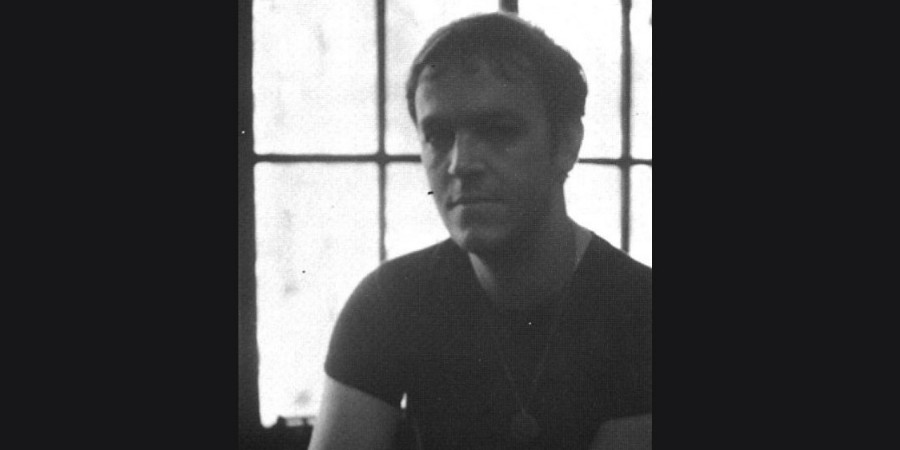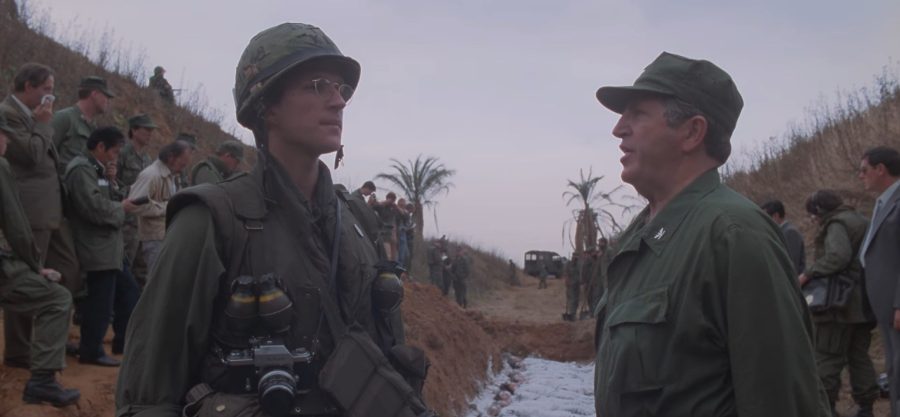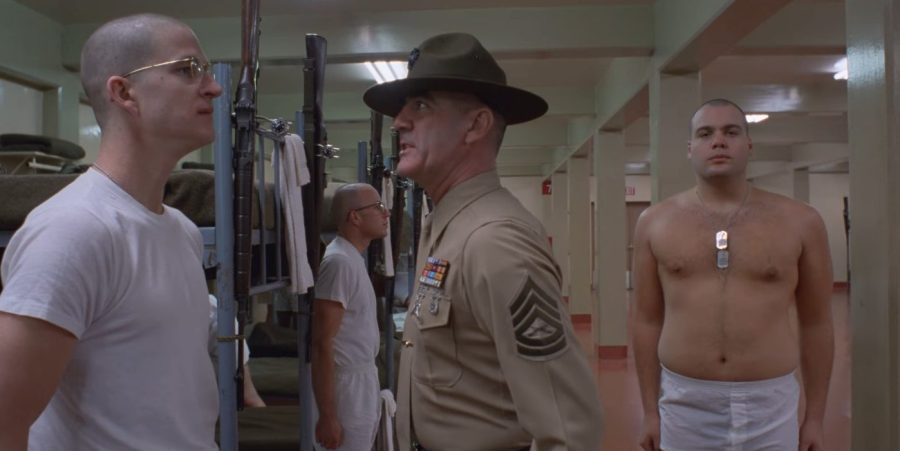‘Full Metal Jacket’ is a 1987 war drama movie directed by Stanley Kubrick that follows a group of U.S. Marines who take part in the Tet Offensive of the Vietnam War after completing their rigorous and demanding base camp training. The film recreates a stunningly realistic portrayal of the life of an American soldier during the Vietnam War.
Critics have lauded it for depicting the hardships of war and the environment of military training camps. Naturally, viewers must be curious to learn whether the classic film is inspired by any real events or true stories. If you wish to find out the same, here is everything we have gathered about the inspiration behind ‘Full Metal Jacket.’
Is Full Metal Jacket Based on a True Story?
‘Full Metal Jacket’ is partially based on a true story. The film is an adaptation of Gustav Hasford’s novel titled ‘The Short-Timers.’ The novel was first published in 1979. The book was later adapted into the film by Michael Herr and Stanley Kubrick with inputs from Hasford. The novel has been described as semi-autobiographical in nature as Hasford used his real-life experiences in Vietnam to pen the story.

Jerry Gustave Hasford was born on November 28, 1947, in Russellville, Alabama. He joined the United States Marine Corps in 1966. Hasford worked as a combat correspondent during the Vietnam War. He was conferred with the Navy & Marine Corps Achievement Medal with Valor Device for his exemplary service during the Battle of Huế in 1968. Later in life, Hasford turned his attention to writing and attended the Clarion Workshop. After publishing several short stories and poems, he turned his attention to writing a novel.
Hasford used his personal experiences during the Vietnam War to write ‘The Short-Timers.’ Therefore, the book has been described as a piece of semi-autobiographical work. However, none of the characters in the book share their names with any real people and are likely composite or fictional creations loosely based on Hasford and his platoon who served in Vietnam. Therefore, the book’s narrative leans more towards the realm of fiction than reality, with Hasford’s experiences serving as an inspiration.
Nonetheless, by setting the story against the backdrop of the Vietnam War, Hasford creates a realistic portrayal of the circumstances and the hardships soldiers faced during the war. Moreover, the book references various real-life locations which were of strategic importance during the Vietnam War. Therefore, the essence of realism never fades from the book’s narrative and its film adaptation.
However, there are some notable differences between the film and the novel. One of the most significant changes is that drill instructor Gunnery Sergeant Gerheim from the book is renamed Hartman in the film. Moreover, in the book, the death scene of Gerheim has noticeably different dialog in comparison to the death of Hartman in the film.

Although the novel is divided into three parts, the book faithfully (and largely) adapts the first part to the screen with minor cosmetic changes. On the other hand, the second part of the book serves as the second half of the film, with elements of the third part only partially injected into the narrative. Likewise, several important sequences from parts 1 and 2 of the book do not appear in the film. In the book, combat photographer Rafterman perishes while his fate is left open in the movie. Therefore, it is safe to say that the makers chose the narrative elements that suited their take on the subject material and used it to craft a visually compelling narrative.
Furthermore, actor Lee Ermey who appears in the film as Gunnery Sergeant Hartman served as a drill instructor in the Vietnam War, just like his character, and drew from his personal experiences to deliver his performance. Writer Michael Herr, who co-wrote the screenplay, worked as a correspondent for Esquire magazine during the Vietnam War and likely also drew inspiration from personal experiences to write the film.
All things said, ‘Full Metal Jacket’ is a fictional story immersed in the real-life experiences of various people, especially Gustav Hasford. It utilizes various fictional characters who face challenging scenarios and moral conflicts that allow the audience to connect with the narrative. The film uses the various thought-provoking and emotional aspects of the source material to craft its own unique visually entertaining experience.
Read More: Where Was Full Metal Jacket (1987) Filmed?


You must be logged in to post a comment.